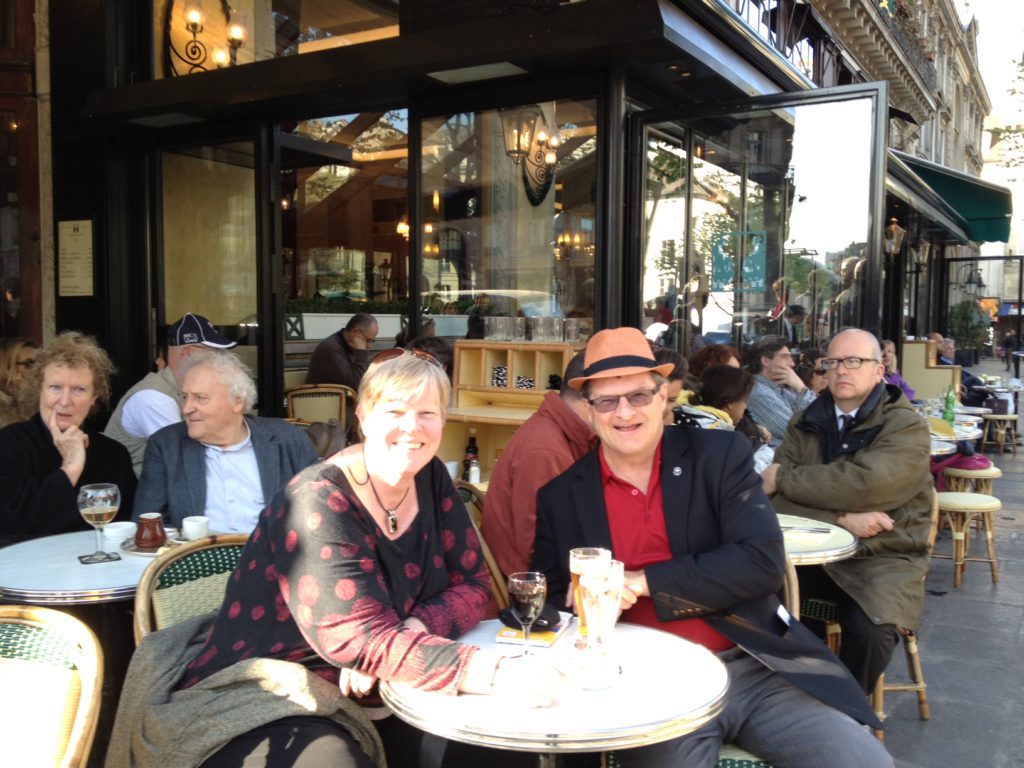Writing, in the beginning, was merely an occupational necessity. I was an H.R. Professional. I wrote letters, memoranda, policy papers, employee handbooks. I suppose some of this was fiction. The fact that I liked language and had a desire for excellence meant only that I wanted to craft good quality correspondence and reports. There were few risks in it. I knew my subject, and my audience, and had confidence. I took some pleasure in that, but not joy. I was not driven to write for writing’s sake.
As a career coach I began to produce articles as handouts for my clients to support them in job search and career planning. It’s a necessary part of offering professional services that you have branded take-aways for your clients. It becomes even more compelling if a corporate sponsor sets a deadline and would actually pay for your handouts. So my first serious ‘publications’ were the AFS (Avoid False Steps) Job Search and Career Management manuals. (These manuals are available from my printer, lulu.com.) The style was wholly pragmatic and task oriented. And there was very little in the way of humour or my own personality in them.
The job search and career planning programs were only one part of my management consulting practice (see, AFS Consulting website for more information). More complicated are my executive development programs. And so were the manuals for these EDPs. To be honest, I was delivering programs long before I wrote the manuals: I had thought about developing a manual for at least ten years before they actually began to take form. But the prospect of writing the manual was daunting, so I made excuses for my procrastination – I called it marketing and selling, and closing, and delivering programs, and invoicing, banking and accounting. Avoidance never solves any problem though: I needed those manuals. I tried to recruit ‘ghost writers’ to write the manual for me but that proved an empty strategy. I had to write it myself. It took another five years but as is oft quoted (lao-tse, not mao tse tung): a journey of a thousand miles begins with a single step. Once started the manual began to take on form. But it would be two more years before the ‘first draft’ was ready for review.
[Now there’s an oxymoron for you: ‘first draft’. I don’t know about other writers but my ‘first draft’ is a sufficiently finished product that I am willing to give to trusted advisors for review. It means that ‘first draft’ has already been reviewed and revised and modified and amended and reorganized many times before it ever got to the ‘first draft’ state.]
I don’t want to give the impression that my writing career and the development of my writing style was linear. It was not. While I was struggling to get a first draft of my management effectiveness manual down, I was also dabbling in fiction and memoir. The first editions of my career management manuals occurred in the late 1990s. My Management Effectiveness manual began to take form in 2010. In between I wrote a set of short essays, about my dog! These began as simple newsletters – updaters for the previous owner, and the breeder, and a growing list of interested readers – on the dog’s progress in his new home; but really, they were more therapy for me – that dog didn’t regard me as alpha for a year. The newsletters (in the days before blogs!) began to take on a life of their own and like Charles Dickens I started issuing one a week. I began to refer to them as The Maxim Chronicles, A Year with a Champion Poodle. My writing style, a combination of narrative laced with humour, much more relaxed than my professional writing style, began to emerge. The journal morphed after a year into a second volume, The Hallelujah Chorus, Living with a Beautiful Bitch, but then got derailed by other life events. My next writing effort was about a thwarted love affair, which never saw the light of day; neither did its sequel. But they are still in the vault and may yet find a few readers.
Then came my Hemingway Moment – I went to France to get feedback from a colleague on that executive development manual. Three of my professional colleagues had agreed to provide editorial comment on the draft manuscript but my colleague in Paris was the one who put significant effort into the project. However, getting annotated edits via email proved awkward and tedious. We tried Skyping but that had its limitations too. So in a moment of impetuosity (for me) I said, why don’t I go to Paris for 10 days, sit down with my generous friend and scour that manuscript page by page? Touring Paris would be a minor added benefit. I must have said it out loud as my wife Marlene declined to come with me (she said she’d been to Paris once, why should she go again?). I packed my bags and joined the stream of clichéed would-be writers following in Hemingway’s footsteps. Roberta and I braved the cool April temperatures and frequented bistro after café after brasserie watching Paris walk past our sidewalk seats. We even spent an afternoon at Ernest’s favourite haunt, Les Deux Magots:


Roberta sent me home with a long long list of suggestions and challenges, and it took me the better part of the summer to digest them all. And as every writer will say, the work is vastly improved by the inputs of an objective and skilled editor, even though there is pain involved.
I thought I was finished with that executive development manual when I went to press: I had a product I could give to each new client who entered my program and I had also sold about 75 copies of the printed manual to former clients and colleagues. But that was merely the end of the beginning. Another of my helpful colleagues offered me a new challenge: ‘This manual is quite good Doug, but you should turn it into a book that anyone might want to buy, not just your clients!’ I frowned, I equivocated, I demurred, I withered under her scorn of my timidity. I launched myself into my breakthrough opus: The Dynamics of Management. She gave me six months to get it done. It took two and a half years. The question now was, shall I publish it? It takes a lot of energy and courage to write a book, especially a professional book with references, charts, tables, footnotes and a bibliography! But it takes even more courage to press, ‘Publish’ and expose yourself to the world.
We’ll talk more about courage in the next blog.
